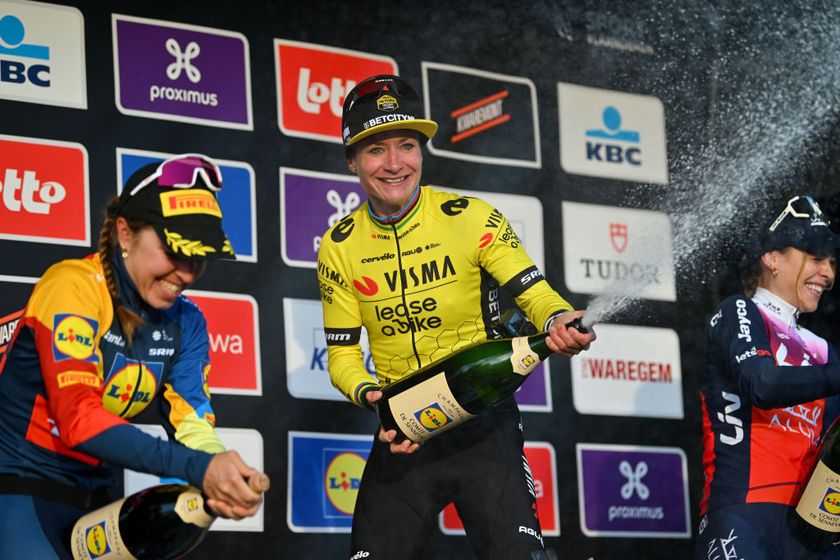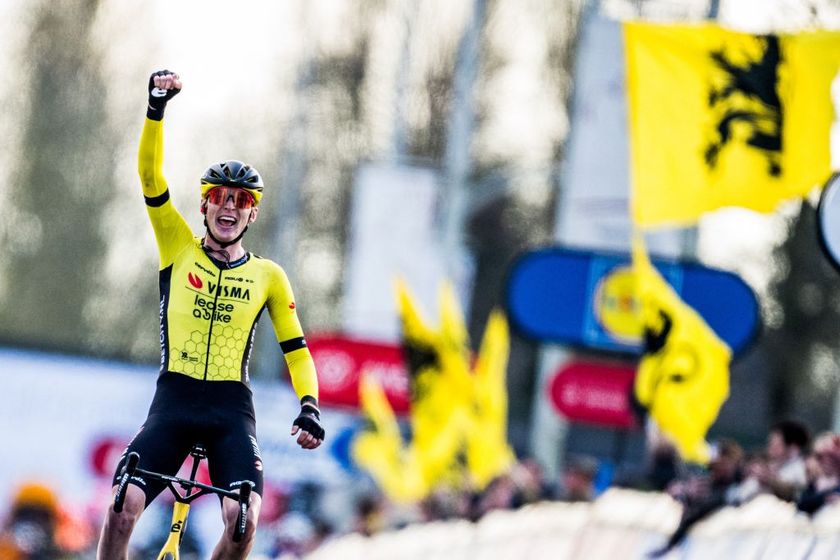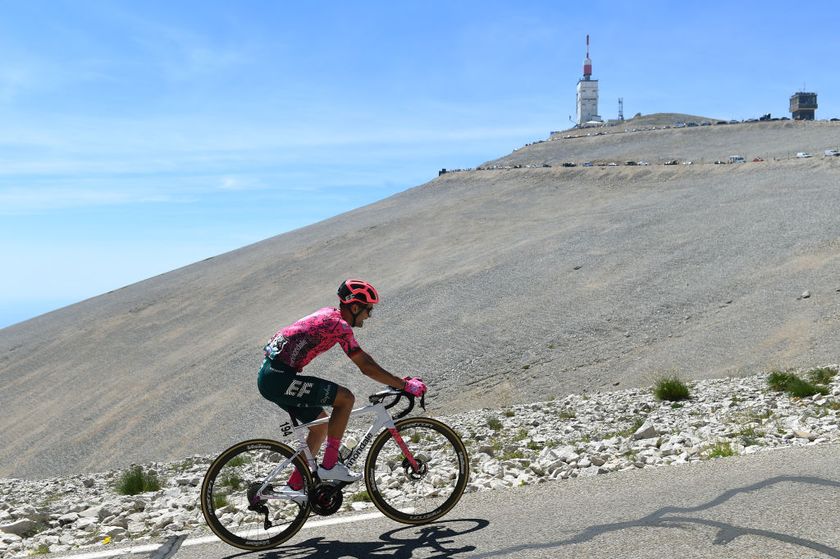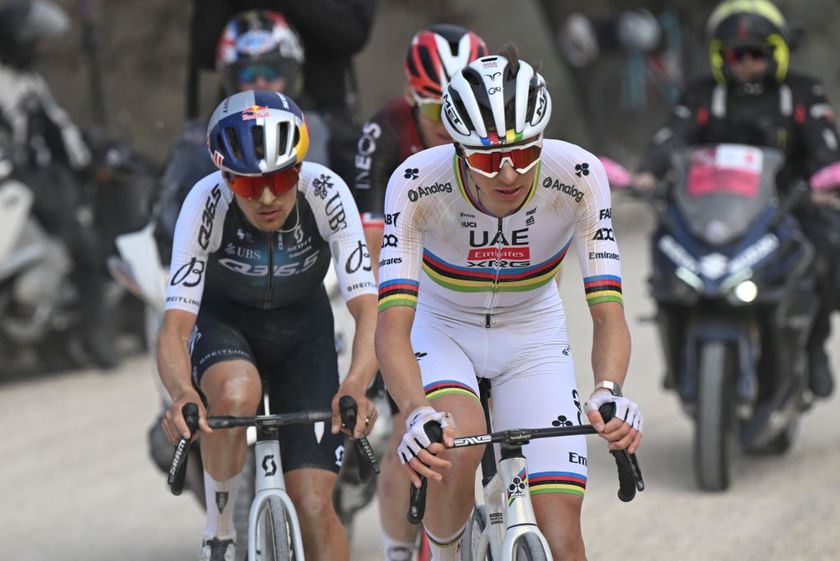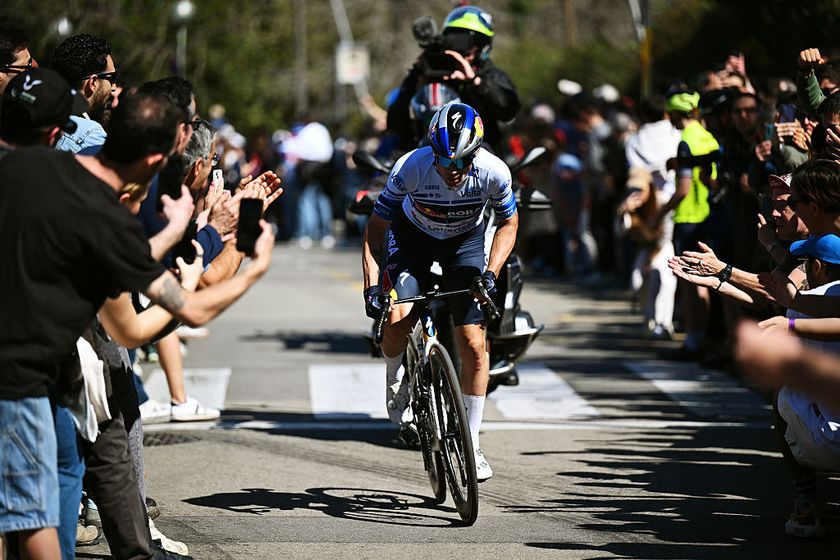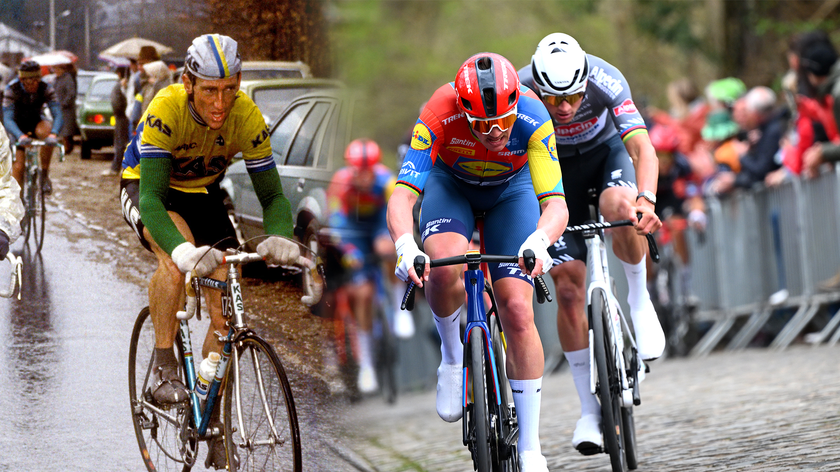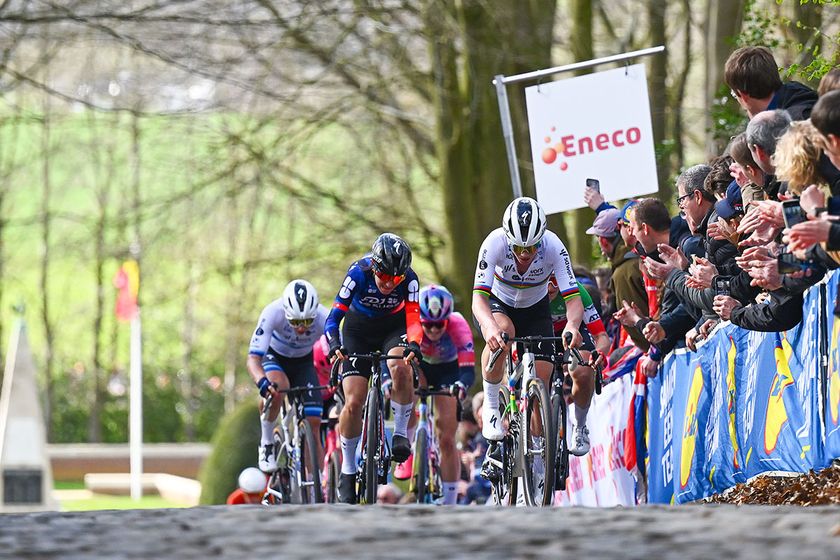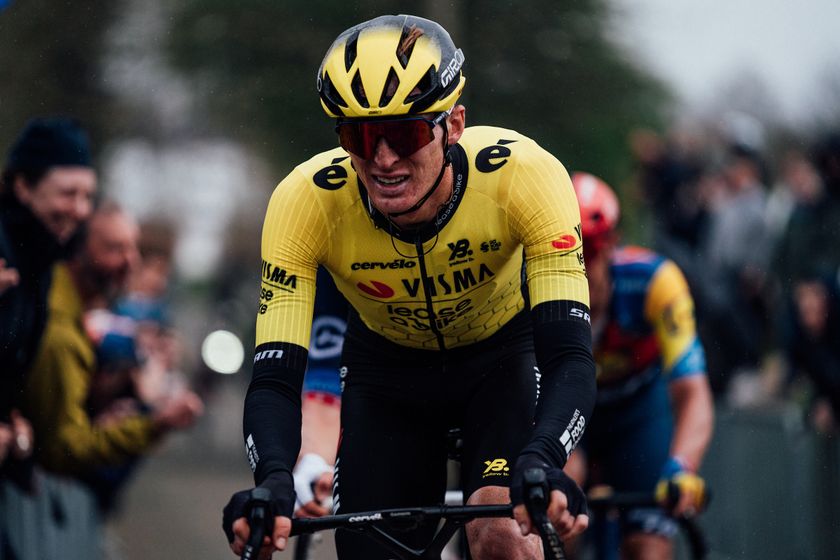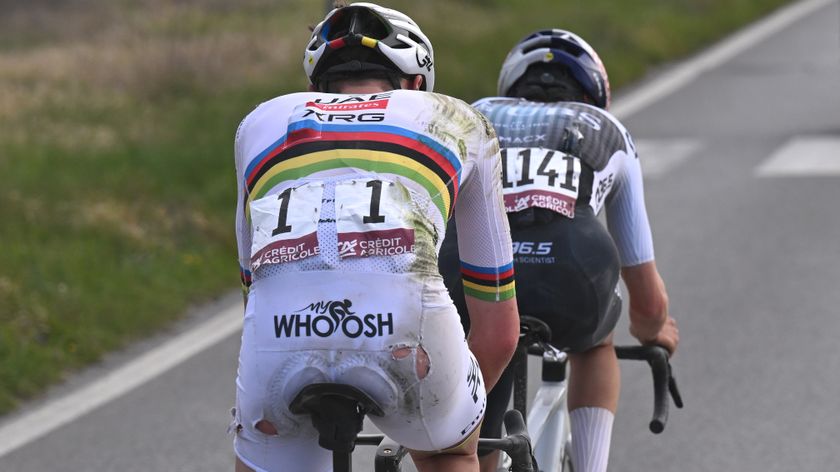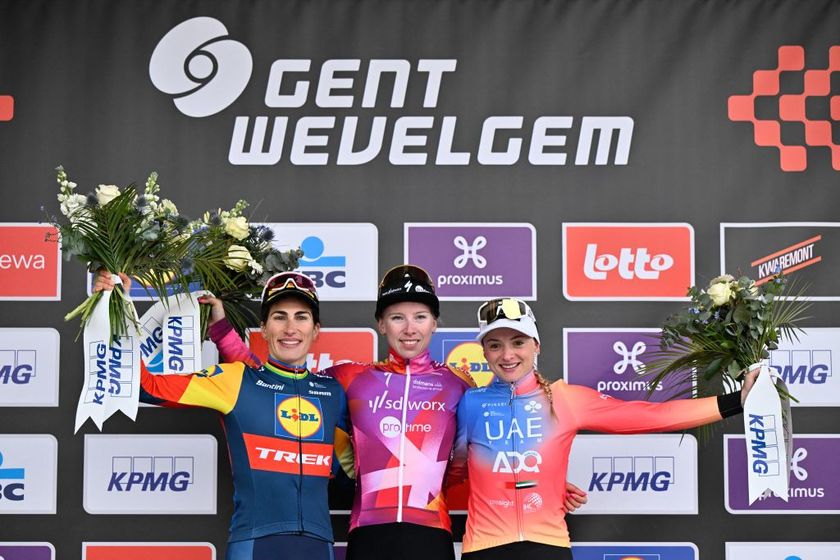Round Canberra by Carts
Australia's capital Canberra can be a bit chilly in winter, but that doesn't stop the city's devoted...


Tales from the peloton, April 16, 2004
Australia's capital Canberra can be a bit chilly in winter, but that doesn't stop the city's devoted cyclists from forming some of the most organised bunch rides in Australia 52 weeks a year. In this article originally published in RIDE Cycling Review, the late Mark 'Carts' Carter explained details of the rides and why he was proud of his town's reputation as a cycling-friendly place.
Canberra's proud tradition of being a great place to train in quality bunches and race against strong competition is due, in part, to the size of the city and its proximity to country roads. The national capital has a population of around 300,000. It's big enough to be able to generate strong competition, and small enough that riders can train with relative ease on a variety of back roads. Even routes in the centre of town aren't as congested as other major cities.
There is a rich heritage of cycling here but it's worth noting that Canberra is a two club city. The racing calendar is therefore shared by both clubs, making the racing effectively one constant interclub competition. The Canberra Cycling Club is the oldest and the largest, while the relative newcomer, The Tuggeranong Vikings Cycling Club, is based in the far south and entered the scene about 10 years ago.
Canberra has produced many top notch riders over the years such as Neil Stephens, Stephen Hodge and the Rogers brothers (Pete, Deane and Mick) as well as Tracey Gaudry, to name but a few. More recently, under the guidance of ACT Academy Coach, Warren McDonald, Canberra's current crop of talent bodes well for the future of Australian - if not international - cycling. This crew of riders includes the likes of Mick Rogers, Mathew Hayman, Rory Sutherland, Alison Wright, Margaret Hemsley, Oenone Wood, Mary Grigson (MTB), Brent Miller (MTB), Ben Cory (the world junior downhill champion) as well as two junior world champions on the track in Kial Stewart and Jess Maclean.
The Canberra Cycling Club has a long history of bunch rides, dating back to the 1920s. Established on 15 November 1926, the Canberra Cycling Club was affiliated with the League of New South Wales Wheelmen. Its first ride was held on the first Sunday after the club was formed. This ride departed at 2.30pm from in front of the Hotel Canberra, with "all members and others desirous of joining up" called upon to participate. The initial call-up encouraged the locals not to "miss this opportunity for an enjoyable spin".
Get ready for the Gallop
Get The Leadout Newsletter
The latest race content, interviews, features, reviews and expert buying guides, direct to your inbox!
The king of the training bunch rides these days is the Saturday morning Bakery Gallop. The Gallop was initiated by a handful of riders who wanted a solid hit-out during daylight savings months to fill the Saturday void which would normally be road racing during the winter months.
During summer the average attendance is around 60-80, on some occasions swelling to 100 riders when the weather is perfect and all the pros are back in town. The summer Gallop draws in additional everyday Caffeine Culture riders because of the fact that they can ride and mix with the likes of Mick Rogers, Mathew Hayman et al. But it's not just the everyday punters who love this ride. When Mathew Hayman was interviewed in a British cycling magazine after winning the Challenge Mallorca at the start of the 2001 season, he was asked where he thought the best place in the world to train was. "Canberra," replied the Rabobank professional. "They have this ride, where if you win the kick you're a legend for a few minutes." This is an accurate appraisal especially during the post-kick banter at the brew shop, where raconteurs recount the morning's events with vigour.
The Saturday ride takes on a spectacular route, especially during the first half hour. Riders depart from the suburb of Phillip at 6.30am and ride 10km to the south of the city centre and then up along Adelaide Avenue. This is a three lane per carriageway, divided by a wide expanse of lawn. The avenue steadily rises up, cresting at the Prime Minister's Lodge, just as the spectacular sight of Parliament House comes into view, glowing in the soft early morning light of a summer morning. It stands impressive in the contrasting light and shadows, still only partially lit, as the bunch swoops downhill around the shaded western side.
The three lanes continue down the tree lined Commonwealth Avenue and over Lake Burley Griffin, which often still has pockets of mist hovering over the water as the sun starts to gently warm the lake and the ensuing day. Commonwealth Avenue becomes Northbourne Avenue, as riders sweep off Vernon Circle and down through the centre of the city. The ride follows Northbourne to the outskirts of Dickson before turning west and heading up Ginninderra Drive to the north western region of Belconnen.
The second half hour sees the riders climb the Ginninderra Drive hill. Not a very difficult ascent in its own right, but when the horses at the front turn the screws there's plenty of heavy breathing and a hush of talking for a couple of minutes before the chatter starts again on a flat section with a faint downhill. This lasts a dozen or so kilometres to the outer reaches of Belconnen. The next phase takes you through the suburbs of Dunlop, Fraser and Spence, before arriving at the Barton Highway in the far north western corner of the ACT. And, after a little more than an hour of riding, this is where The Gallop begins.
The latest region to be developed in Canberra is Gungahlin in the northern pocket of the city, almost touching the NSW border. Here the swarming bunch is rapidly strung out to double then single file when the button is pushed… launching riders through a series of nine roundabouts, some small, some large enough to pedal around, before lining up for the first intermediate sprint of the day on Clarrie Hermes Drive. You need to be in the top 15 or so through this sector to claim the glory here because it's difficult to move up due to the high speed and technical nature of the course.
After this, a neutral zone is enforced for a few kilometres to allow the bunch to regroup. This is aimed at keeping the bunch as one, which can quickly get through sets of traffic lights as a collective and cause as little disruption to motorists as possible. This gesture has come about recently as Gungahlin has grown and traffic has increased, including more pedestrian movement in the vicinity of the new shopping centre. Keeping on the right side of motorists and police alike is paramount in the attitude of Canberra's clubs which not only seek to protect members through risk reduction measures, but also cast cycling in a more favourable light when the clubs seek endorsement to race on public roads.
After passing the Gungahlin Marketplace, the speed is upped immediately for the burst down to the National Exhibition Centre (about seven kilometres away), where the final sprint is contested just outside the Canberra Race Track. The approach is downhill before evening out in the final kilometre. The road is wide and, as a result, the peloton is often stretched across the lanes making for a frantic finish. Timing is of the essence. One needs to be patient and on the correct lead-out train to be in with a shot at the second and final sprint.
Afterwards, the bunch ambles through Canberra's inner north towards the city for coffee. The total route is a bit under 60km and is ridden at an average of almost 40kph, however many go out for extra kilometres after their caffè sosta.
The other rides
The Sunday ride is one of Canberra cycling's longest standing traditions. It meets 52 weeks a year, as well as all public holidays, always at 8.00am. This bunch meets at Scrivener Dam, the most south western point of Lake Burley Griffin. Unlike the other bunch rides, the Sunday route is not static and the route is chosen usually by a general consensus of a few of the more experienced riders. In general, the Sunday ride is two to four hours long, with many riders doing more before and/or after.
Being the long ride of the week, riders tend to head out of town and here is a synopsis of some of the roads and regions around Canberra which can be used to add to your kilometre tally.
North takes riders up the Federal Highway, where the Old Federal Highway is a favourite stomping ground. Utilising the now defunct highway, you can aim west through Canberra's wine growing district in the region of Sutton and Nanima Roads towards Murrumbateman, or east down through Queanbeyan.
East will send you out towards Queanbeyan on a route which is generally flat. A common course is to ride up Sutton Road after Queanbeyan and then return to town from the north.
Riding south you go through the suburb of Tuggeranong to Tharwa. You can return along the Monaro Highway from the south east, which has a famous gallop along the flatlands. Alternatively riders can turn right at Tharwa and return from the south west taking in much of the final stage of the Canberra Tour, through the now severely burnt areas around Tidbinbilla and the Cotter. Or, if you feel fit enough to take on a really difficult course, you can head even further south to the notorious Fitz's Hill (three kilometres of steep, straight climbing). Ask anyone who's raced the Canberra Tour just how much this climb hurts. Or there's the Honeysuckle Creek climb which ascends 10km to the site of the now defunct deep space tracking station.
West is the hilliest region within easy reach. Here you can ride over the other climbs of the Canberra Tour, including the Cotter, Uriarra, Condor Creek, Coppins Crossing, Mt Stromlo and Mt McDonald, as well as Tidbinbilla and down to Tharwa as mentioned above. The Cotter Uriarra loop (about 40km long) is a favourite in the region. It's a good length for a solid work-out especially when you add the ride to and from home.
The weekday rides commence at 6.00am. Formerly the northside bunch was the strongest, with virtually no starters in the south. In the past seven years or so, the demographics have swung to be the opposite and now the southside bunch is where virtually all riders head to. The southside bunch has a well drilled training program which consists of a mixture of speed work, strength endurance and recovery rides.
On top of the myriad of bunches which head out on a daily basis around Canberra, there is also a vast network of bike paths which are particularly good for commuting. Canberra has both on-road bike lanes as well as specific bike paths around the lakes and through the suburbs. The bike paths are an excellent way to train when the roads get too hectic during peak hour. There's a 20km lap around Lake Burley Griffin which offers locals who work in or near the city centre of Parliamentary Triangle a tranquil route to work. For everyone else, this path is a particularly good place to get out on the bike for a decent stint of traffic-free pedalling.
Canberra has a bustling cycling scene which has continued to grow. The race numbers are on the increase every year, feeding off the success of the city's summer criterium series which attracts a lot of new riders who often go on to take up cycling and enjoy training in the bunches. The mixture of undulating terrain, a wide selection of roads and bike paths, and a friendly and competitive racing fraternity - all in a clean unpolluted environment - make Canberra an excellent place for cyclists to live… and ride.
I spent six months living in Italy earlier this year. My training rides took me through some of the most spectacular ancient Tuscan towns and I was happy to enjoy fantastic café in the homeland of real coffee… but I don't mind one bit that I'm home in time to enjoy the summer - and added riding time that daylight savings offers. Dare I say it, one of the best bunch rides in the country… and indeed the world.
